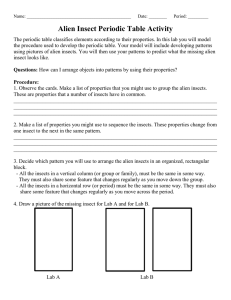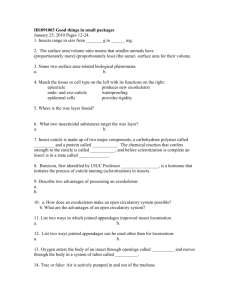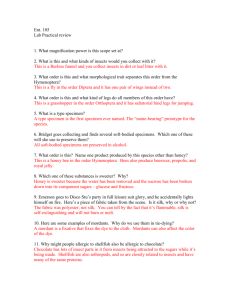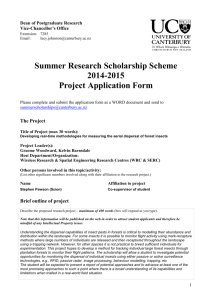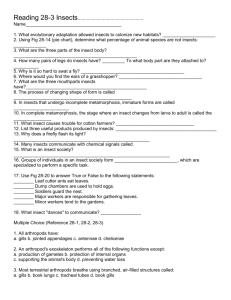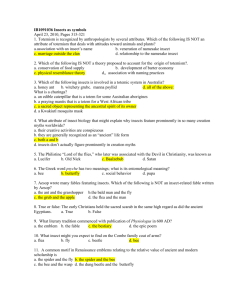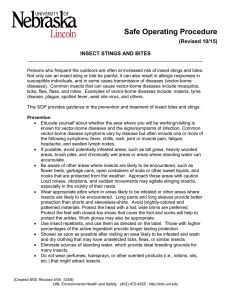Advanced insect taxonomy 606752
advertisement
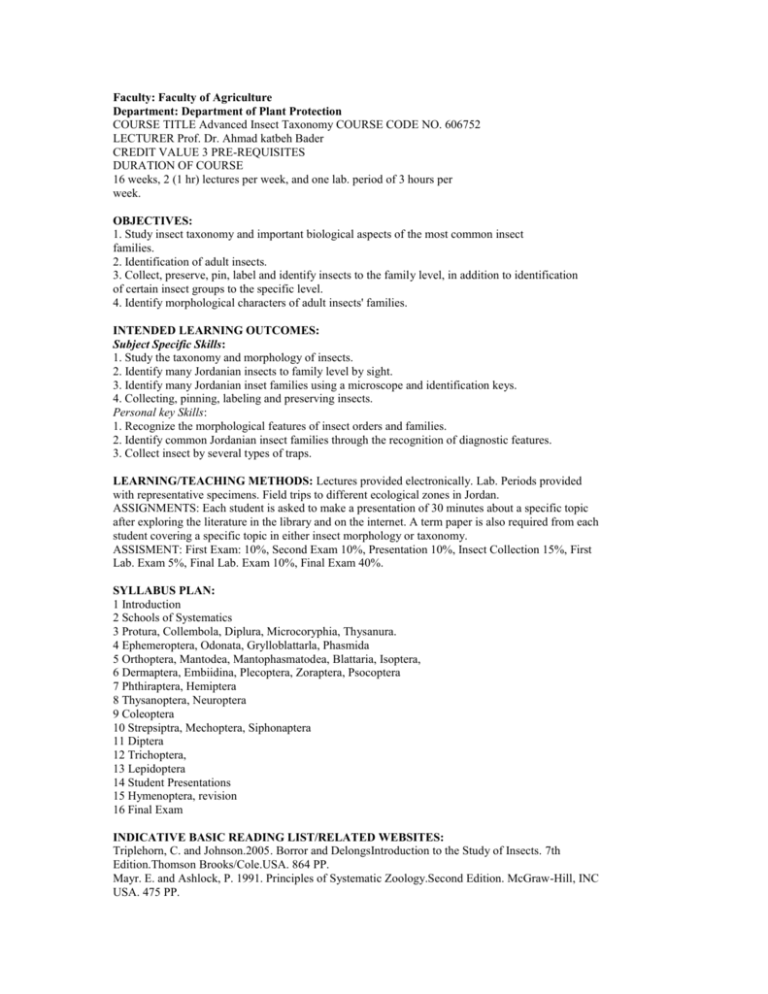
Faculty: Faculty of Agriculture Department: Department of Plant Protection COURSE TITLE Advanced Insect Taxonomy COURSE CODE NO. 606752 LECTURER Prof. Dr. Ahmad katbeh Bader CREDIT VALUE 3 PRE-REQUISITES DURATION OF COURSE 16 weeks, 2 (1 hr) lectures per week, and one lab. period of 3 hours per week. OBJECTIVES: 1. Study insect taxonomy and important biological aspects of the most common insect families. 2. Identification of adult insects. 3. Collect, preserve, pin, label and identify insects to the family level, in addition to identification of certain insect groups to the specific level. 4. Identify morphological characters of adult insects' families. INTENDED LEARNING OUTCOMES: Subject Specific Skills: 1. Study the taxonomy and morphology of insects. 2. Identify many Jordanian insects to family level by sight. 3. Identify many Jordanian inset families using a microscope and identification keys. 4. Collecting, pinning, labeling and preserving insects. Personal key Skills: 1. Recognize the morphological features of insect orders and families. 2. Identify common Jordanian insect families through the recognition of diagnostic features. 3. Collect insect by several types of traps. LEARNING/TEACHING METHODS: Lectures provided electronically. Lab. Periods provided with representative specimens. Field trips to different ecological zones in Jordan. ASSIGNMENTS: Each student is asked to make a presentation of 30 minutes about a specific topic after exploring the literature in the library and on the internet. A term paper is also required from each student covering a specific topic in either insect morphology or taxonomy. ASSISMENT: First Exam: 10%, Second Exam 10%, Presentation 10%, Insect Collection 15%, First Lab. Exam 5%, Final Lab. Exam 10%, Final Exam 40%. SYLLABUS PLAN: 1 Introduction 2 Schools of Systematics 3 Protura, Collembola, Diplura, Microcoryphia, Thysanura. 4 Ephemeroptera, Odonata, Grylloblattarla, Phasmida 5 Orthoptera, Mantodea, Mantophasmatodea, Blattaria, Isoptera, 6 Dermaptera, Embiidina, Plecoptera, Zoraptera, Psocoptera 7 Phthiraptera, Hemiptera 8 Thysanoptera, Neuroptera 9 Coleoptera 10 Strepsiptra, Mechoptera, Siphonaptera 11 Diptera 12 Trichoptera, 13 Lepidoptera 14 Student Presentations 15 Hymenoptera, revision 16 Final Exam INDICATIVE BASIC READING LIST/RELATED WEBSITES: Triplehorn, C. and Johnson.2005. Borror and DelongsIntroduction to the Study of Insects. 7th Edition.Thomson Brooks/Cole.USA. 864 PP. Mayr. E. and Ashlock, P. 1991. Principles of Systematic Zoology.Second Edition. McGraw-Hill, INC USA. 475 PP. Ride. W. D. et al (editors). 1985. International code of Zoological Nomenclature. University of California Press.Third Edition.338 PP.Latest edition available on the internet. Papers in several entomology journals.



